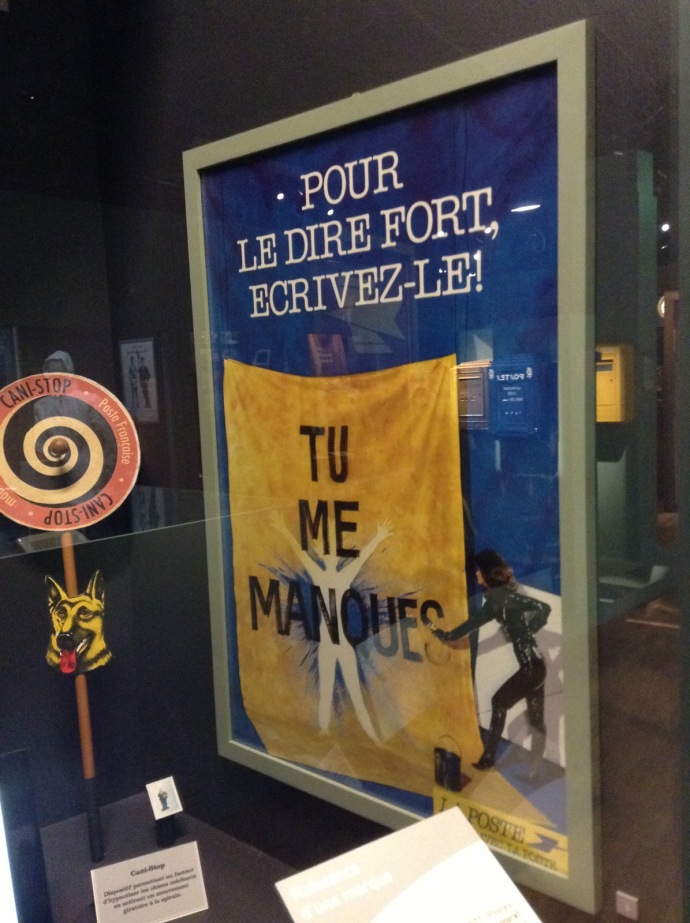Two references I often give during my talks/courses:
The 6 words novels (already evoked in an earlier post)
&
The “Meanwhile” video, close to a “what-if” routine
[youtube https://www.youtube.com/watch?v=YmokqDrIBKg]
Two references I often give during my talks/courses:
The 6 words novels (already evoked in an earlier post)
&
The “Meanwhile” video, close to a “what-if” routine
[youtube https://www.youtube.com/watch?v=YmokqDrIBKg]
I collect every adverts or documents I find, related to a sense of historical filiation in technology evolution or, in other words: Traces of “imaginaires” of innovation.
For instance I collect youtube videos, like this one, on my my Youtube channel, in this specific playlist .
Here are a selection of them:
From:
• Nicolas Nova http://betaknowledge.tumblr.com/
• http://windowshighasfuck.tumblr.com/
Why do I blog this?
Except the fact it is funny, I find this old desktop metaphor in a way reassuring, as it reminds of well-known interactions (the ones considered as simple/natural), the first ones we’ve learned, while this is no skeuomorphism, it is symbolic/iconic/pictographic. And I wonder, would it reassure older generations?
Thanks to SamsungMobileUSA on Youtube, here is a quick review of the historical filiation of wrist watch telephonic devices: Samsung Galaxy Gear: A Long Time Coming
http://www.youtube.com/watch?v=B3qeJKax2CU
TeleSound is a cute speaker containing over 1,000 sounds that you and your friends can trigger from a smartphone or tablet over the Internet. Coming on Kickstarter on Thursday 28 Feb., don’t go further than your fridge!
telesound.me
When Skype collaborates with artists:
Skype 2013 VS a project from John Clang 2012
• http://skypestaytogether.com/denis/
• http://www.johnclang.com/artwork/beingtogether.html
This collection of artifacts will help me to begin my “State Of The Art” of telepresence artifacts. I received it from my friend and former colleague at Bell Labs: Fabrice Poussière, thank you!
Memo: I will also have to make a SOTA of fictional/diegetic/futuristic prototypes in that field.
A source of inspiration from “design fiction” practitioners:
The “Alive” exhibition at Espace Fondation EDF – http://thisisalive.com/ – reminds me a lot the work of Dunne&Raby and Gaver’s work at RCA and Goldsmith. Not surprising as the exhibition is curated by the french designer Carole Collet—Reader in Textile Futures, TFRC, Central Saint Martins College, University of the Arts—which might be close to Gaver’s work. The design fiction approach applied to biotechnologies is a good match and the most interesting part of the exhibition was the public reaction. I especially remember a couple of grand-parents nearly terrified—between astonished and shocked— in front of some films. However, unlike in Dunne&Rabt usual stance, “the ethical and social questioning presented in a fictional form” is a bit more obvious.
Text from http://thisisalive.com/about/ – “IMAGINE A WORLD WHERE BIOLOGICAL FABRICATION REPLACES TRADITIONAL MANUFACTURE, PLANTS THAT GROW PRODUCTS, AND BACTERIA GENETICALLY RE-PROGRAMMED TO ‘BIOFACTURE’ NEW MATERIALS, ARTEFACTS, ENERGY OR MEDICINE. This world is happening right now. Today, designers and artists have begun to either embrace or rebel against this bioengineered world and as a result, new design directions are beginning to emerge.”
I would like to make a focus on the Echromi project which—in my sense—takes “design fiction” to a next level as it vulgarize scientific facts, explore new scientific possibilities thanks to design and seems (is?) makable today. Learn more: http://www.echromi.com/
The rest of the picture in a gallery:
I didn’t know the existence of pneumatic networks of communication in Paris in the 60’s. I’ve always been fascinated by these devices in Brazil (1985), they look exactly like it! As shown in this video http://youtu.be/lfjLpa-n4d0?t=1h45m5s
I also found this information in Montagné’s book: Transmissions (2008) – see this post.
Text taken from the museum: “Le pneumatique apparaît à Paris en 1866, il est constitué d’un ensemble de tuyaux parcourus par des cylindres appelés curseurs et acheminés par déplacement d’air. Le réseau, placé dans les égouts, relie les bureaux télégraphiques. Il atteint une longueur de 400km en 1957. Les curseurs voyagent jusqu’à 600 mètres/minutes et peuvent contenir 35 lettres. Le pneumatique cesse de fonctionner en 1984.”
I found this last week, I went to L’Adresse Musée de La Poste. – http://www.laposte.fr/adressemusee – “L’Adresse Musée de La Poste is a place of preservation and diffusion of the mail heritage centred on Writing, History and Culture. From Seven League Boots to the Aeoropostale’s heroes, by way of the panorama of 160 years of the French postage stamps, the Museum collections tell us a story, not only about a company but also about everyday life. Openned since 1946” Here is a couple of pictures I made over there.
• Montagné, J. C. (2008). Transmissions. Jean-Claude Montagné.
Below, the feeling of missing someone is directly linked to the act of writing letters – in this advert.

The rest of my pictures in this gallery
Back cover text in french: “J.-C. B. Montagné, a rassemblé dans l’ouvrage la presque totalité des procédés permettant aux hommes de toutes époques de communiquer entre eux à distance par la transmission de signaux. Son passé d’ingénieur radio-électronicien et son penchant pour un bon usage du Français lui furent utiles pour transcrire en langue courante à la portée de chacun les informations éparses dans les nombreux documents techniques consultés. Les références de ces documents rassemblés dans la bibliographie ouvrent le passage pour une recherche plus approfondie à ceux qui le voudront. Ouvrage de référence rapide, résumé, ce livre est sans doute les deux à la fois. L’expérience de la première édition en a apporté la preuve.”